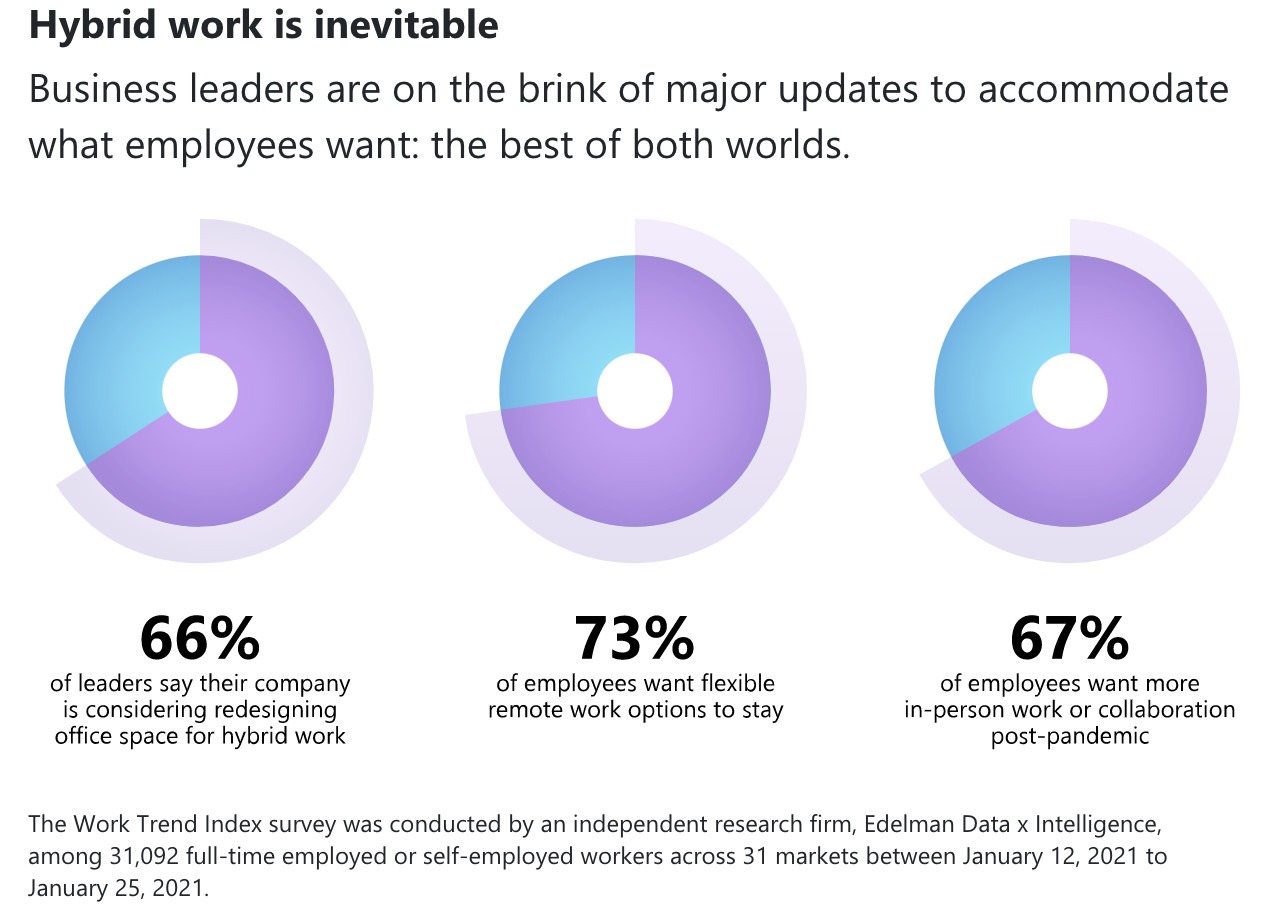The workplace has seen more changes in the past two years than in the previous decade. Thanks to the pandemic, the days of long commutes and office watercooler chats are gone for many as we enter the era of the digital workforce.
Despite the many challenges employers have been forced to navigate in the last two years, from the Great Resignation to the labor shortage, these events have also paved a path for new possibilities and opportunities in 2022.
The future is here, and we are reinventing the traditional workplace model. This blog explores the largest workplace trends taking center stage in 2022.
Diversity, Equity, and Inclusion (DE&I) Takes the Spotlight
“A diverse mix of voices leads to better discussions, decisions, and outcomes for everyone.” – Sundar Pichai.
There have been more expectations than ever for employers across all industries to take DE&I efforts seriously. CNBC & SurveyMonkey’s Workforce Survey revealed that nearly 80% of workers want to work for a company that values diversity, equity, and inclusion. Companies such as Apple and Google have already proven to be at the forefront of these DE&I initiatives, with workforce demographic reports, leadership roles focused on diversity, and other inclusive efforts.
In 2022, employers should expect to make changes by implementing an actionable DE&I strategy if they haven’t already.
Hybrid Work Will Be Here to Stay
According to Harvard Business Review, more than 90% of employers plan to adopt a hybrid working model for their knowledge workers in 2022. The pandemic taught the world that working outside of office walls is possible and sometimes can be done even better in a remote environment. As a result, employee expectations have shifted to choosing how often they want to go into the office or not.

According to Microsoft’s Work Trend Index survey, over 70% of employees want flexible remote work options to stay. However, a hybrid model doesn’t come without its challenges. Without the right strategy, companies can face the consequences of not implementing a clear hybrid workplace policy or a confusing in-person environment. When planning a hybrid workplace strategy, employers will need to think about and implement policies around:
- What type of work requires in-person interaction and collaboration
- What tools and technologies will be needed for a seamless hybrid experience
- What the in-office experience will look like for employees
- What successful collaboration will look like for meetings (that involve remote employees and in-office employees)
Adopting a successful and thoughtful hybrid workplace model will be essential for employers in 2022 and beyond.
The Market Will Remain in the Candidate’s Favor
Nearly every company has felt the effects of the Great Resignation. 4.5 million people quit in November of 2021, a record high that doesn’t seem to be showing any signs of slowing down anytime soon.
The Great Resignation can be attributed to several factors. For some, the pandemic caused many individuals to reflect on their career and purpose, leading them to pursue different opportunities or a career change in its entirety. For others, many employers’ decisions to require employees to return to the office were enough to walk out of a job. And of course, other factors such as burnout, retirement, and more attractive offers have also been at play.
Companies with empty roles to fill will need to reinvent the employee experience to remain desirable to candidates in this market. Employers should address employee engagement, flexibility, and mental health issues – all top priorities for employees in 2022.
A poll by Gallup showed that only 36% of U.S. employees feel engaged in their workplace. Providing the right tools and conversations to promote meaningful interaction will set employers apart and help employees feel engaged.
Flexibility will continue to be at the forefront of employee priorities, a factor that also could help combat the effects of The Great Resignation. According to Gartner’s 2021 Digital Worker Experience Survey, 43% of respondents said that flexibility in working hours helped them achieve greater productivity, while 30% of respondents said that less or no time commuting enabled them to be more productive. As flexibility remains a key component of the new way to work, employers will need to establish guidelines that highlight their organization’s ability to be flexible.
WTW’s 2021 Wellbeing Diagnostic Survey revealed that 86% of employers stated mental health, stress, and burnout were a priority, yet only 26% have adopted a well-being strategy. Employers who implement a well-being strategy that includes access to resources such as counseling and mental health programs will differentiate themselves from competitors.
A Focus on Reducing Bias in the Hiring Process
Removing biases in the workplace, whether conscious or unconscious, has become a larger focus as we continue to shed light on this issue. Some of the most common biases in the hiring process are gender biases, racial biases, age biases, and religious biases. Reducing these biases will be a key component of company efforts to create an equal and fair workplace environment for everybody.
Implementing an innovative background check solution can help companies minimize hiring biases and reduce risk. When using the expertise of a trusted background check vendor, your company can ensure that all candidates will be screened through the same automated process. An automated background check process provides a neutral, third-party perspective free from pre-existing biases or judgments. With this approach, companies can position their organization for a bias-free workplace.
Contact Accurate today to learn how we can help your organization with an optimized candidate experience.



